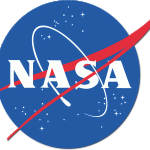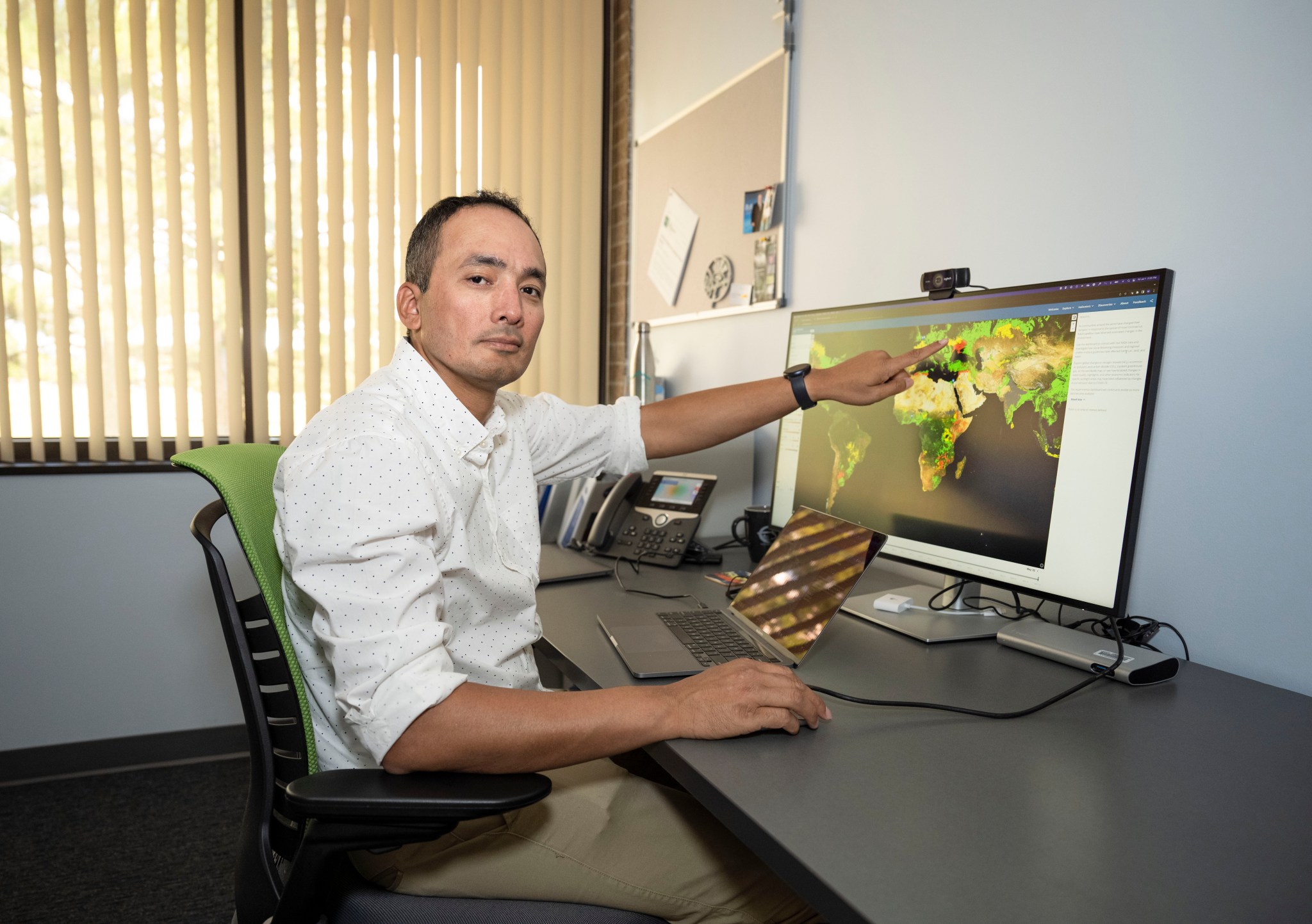NASA data scientist Dr. Manil Maskey has a calm demeanor and a ready smile. He’s also a trailblazer. With peers from around the world, he has created an unprecedented tool to bring our planet down to Earth.
The Earth Observing Dashboard is a user-friendly interactive computer interface for exploring the planet and tracking its changes over time. This knowledge can help us understand our own role in its evolution and guide use of its resources.
COVID-19 triggered the tool’s creation.
“As people across the globe isolated and sheltered from the global pandemic, Earth began to change,” said Maskey at NASA’s Marshall Space Flight Center in Huntsville, Alabama. “The sky seemed a little bluer, the air a little fresher, the water clearer. Some important officials from space agencies took notice.”
Their discernments prompted a decision by NASA, ESA (European Space Agency), and the Japan Aerospace Exploration Agency (JAXA) to pool resources for a closer look.
Maskey was tapped to lead a NASA team of Earth scientists, data engineers, communication personnel, and software developers in working with counterparts at ESA and JAXA. The collaborative team was given just two months to launch a publicly accessible COVID-19 Dashboard to monitor changes wrought by the pandemic.
It was a tall order, but with the situation rapidly evolving there was no time to lose.
During that short period, they mined a wealth of data about our planet from their respective space agencies. The team created stories and interactive tools to showcase examples of changes under five themes: economic activities, air quality, greenhouse gas, agricultural activity, and water quality. Users can explore, visualize, and compare the data to draw their own conclusions.
“We launched the dashboard in June 2020, and its use by both experts and the general public to make notable observations demonstrated its success,” Maskey said.
Those successes inspired Earth science leadership from NASA, ESA, and JAXA to recommend its enrichment to craft the Earth Observing Dashboard.
The team used existing products from the three space agencies, transformed them into dashboard-ready form, added new indicators — biomass and cryosphere — and developed more stories around environmental changes and what they mean for everyone. Users can explore countries and regions across the world to see how the indicators in specific locations change over time.
The international team unveiled the Earth Observing Dashboard on May 26 at ESA’s Living Planet Symposium in Bonn, Germany. It was a hit.
Maskey bestows some credit on the pandemic.
“COVID-19 taught us that transforming data for a storytelling dashboard opens Earth science up for everyone. Storytelling is a format people enjoy and understand. Information about our planet should make sense not just to scientists, but also to John and Jane Doe up the street. “
With the Earth Observation Dashboard, you can get all levels of information in a one-stop-shop. It’s open science at its finest.

Dr. Manil Maskey
NASA Data Scientist
He also lauds cloud computing.
“It helped tremendously that we were experienced operating in the cloud computing environment here at Marshall,” he said. “This gave us a common open platform for collaboration across three time zones. And cloud computing made data processing and delivery efficient, as we didn’t have to download data locally.”
Maskey attributes success mostly to the international team.
“From our IMPACT group here at Marshall, to NASA Headquarters personnel, to our far-away colleagues from ESA and JAXA, these people really care,” he said. “They got up at all times of day and night to attend virtual meetings and work long hours. I think that, like me, they had felt powerless in the face of COVID-19. The pandemic dashboard gave us a way to use our skills and education to make a difference. And we continued to do so, together, to create an even more useful tool.”
Of the team members far away, Maskey noted, “I never met any of them until a few weeks ago, at the Living Planet Symposium in Germany.”
He smiled and added, “It was good to see them all in 3D and hug them.”
For more information on Earth science at NASA, visit:
By Dauna Coulter, NASA’s Marshall Space Flight Center, Huntsville, Ala.
News Media Contact
Molly Porter
Marshall Space Flight Center
256-424-5158
molly.a.porter@nasa.gov



























